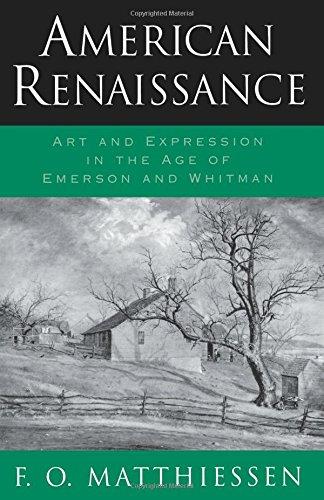Essay
Engraving: Ralph Waldo Emerson, Library of Congress Prints and Photographs Division, Digital ID; pga 01425
“We will walk on our own feet; we will work with our own hands; we will speak our own minds….A nation of men will for the first time exist, because each believes himself inspired by the Divine Soul which also inspires all men.”
With this fiery challenge Ralph Waldo Emerson concluded his 1837 Harvard Phi Beta Kappa Address “The American Scholar,” which was received with great enthusiasm. Emerson argued not only for a new American culture, freed from European bondage, but also for a rebirth of an intellectual and artistic life that was inextricably bound up with the life of the spirit. Before long, Emerson and his circle of writers, reformers, and artists would christen those ideals which governed the spirit “Transcendentalism.”
The Transcendentalists stood at the heart of the American Renaissance–the flowering of our nation’s thought in literature, poetry, painting, sculpture, architecture, and music in the period roughly from 1835 to 1880. Transcendentalism was concentrated in Boston and in Concord, Massachusetts, which was the home of many of its literary members, such as Emerson, Thoreau, Hawthorne, Margaret Fuller, the Alcotts, Theodore Parker, Jones Very, George Ripley, the Peabody Sisters, and the Channings. But Transcendentalism was far broader than a geographical phenomenon or a select club (though Ripley and Emerson founded the Transcendental Club in 1836). Rather, it was a faith shared by such diverse minds in such diverse places as those of Walt Whitman in Brooklyn, Emily Dickinson in Amherst, and the Hudson River School of painters in New York. It was a visionary bent, a way, as the English Romantic poet William Wordsworth once described his mission, “of seeing into the life of things,” and it permeated the best of American thought and art throughout much of the 19th century. Even those artists of the American Renaissance who would find difficulty with the optimism of the Transcendentalists–Hawthorne and Melville among them–were forced to focus on and respond to the existential issues the movement raised.
The term Transcendentalism was derived from the philosopher Kant, who called “all knowledge transcendental which is concerned not with objects but with our mode of knowing objects.” The roots of the American philosophy ran deep into German and English Romanticism. From German philosophers such as Fichte and Herder it received its mystic impulse; from Goethe, Novalis, Jean-Paul, Heine, and the other great German Romantic poets it acquired its imagistic language and themes. German thought was by and large filtered through English translations–Coleridge and Carlyle’s among the best. The English Romantics who enriched the Americans’ perspectives included Blake, Wordsworth, Shelley, Keats, and Byron.
In his 1842 address delivered at Boston’s Masonic Temple, which was later reprinted in The Dial, Emerson attempted to define the philosophy in simple terms: “What is popularly called Transcendentalism among us, is Idealism; Idealism as it appears in 1842.” In reality it was a far more complex collection of beliefs: that the spark of divinity lies within man; that everything in the world is a microcosm of existence; that the individual soul is identical to the world soul, or Over-Soul, as Emerson called it. This belief in the Inner Light led to an emphasis on the authority of the Self–to Walt Whitman’s “I,” to the Emersonian doctrine of Self-Reliance, to Thoreau’s civil disobedience, and to the Utopian communities at Brook Farm and Fruitlands. By meditation, by communing with nature, through work and art, man could transcend his senses and attain an understanding of beauty and goodness and truth.
Transcendentalism dominated the thinking of the American Renaissance, and its resonances reverberated through American life well into the 20th century. In one way or another our most creative minds were drawn into its thrall, attracted not only to its practicable messages of confident self-identity, spiritual progress, and social justice, but also by its aesthetics, which celebrated, in landscape and mindscape, the immense grandeur of the American soul.
–Thomas Hampson and Carla Maria Verdino-Süllwold, PBS I Hear America Singing


